March 16, 2015 - 10:04

Anne Dalke, English 228,
TTh 2:25-3:45, English House I,
Bryn Mawr College, Fall 2015
This class is part of a cluster of three courses in a 360° on Arts of Resistance,
which focuses on the constraints and agency of individual actors in social spaces, with a particular focus on the
institutional settings of colleges and prisons and the “critical spaces” that can open up within them
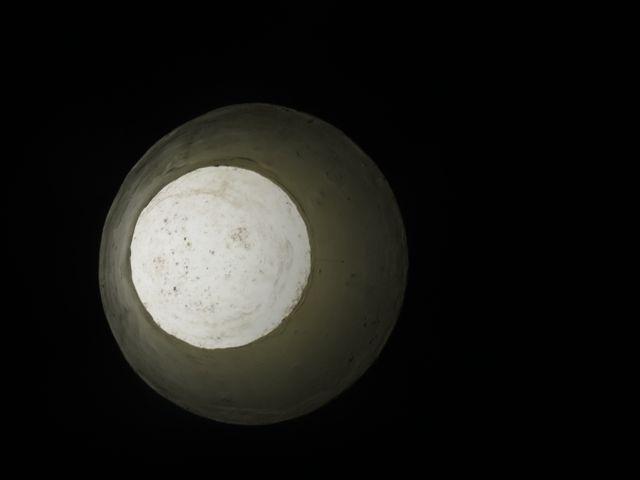
...the image…forces things to stop for a moment. It forces the reader to reinvent breathing so that the eyes can again focus….I was attracted to images…with an incoherence….placed in the text where I thought silence was needed, but I wasn’t interested in making the silence feel empty or effortless the way a blank page would (Claudia Rankine, Bomb: Artists in Conversation).
This English course will consider silence as a rhetorical art and political act, an imaginative space and expressive power that can serve many functions, including that of opening new possibilities among us. We will share our own experiences of silence, re-thinking them through the lenses of how it is explained in philosophy, enacted in classrooms, and performed by various genders, cultures and religions.
Taking as our point of departure Elizabeth Ellsworth’s query--“What kind of educational project would redefine the silence of the unknowable, freeing it from…’Absence, Lack, and Fear,’ and make of that silence ‘a language of its own that changes the nature and direction of speech itself?”--we will situate ourselves on the margins of conventional discourse, on the edges of language, to explore a conceptual understanding of silence as a source of active transformation, a form of active resistance that challenges how social meaning is made. Acknowledging the recalcitrance and contingency of the medium of language, the disparity between what is experienced and what it is possible to say, we will explore silence as an alternative space to think, feel, dream and observe. Possible theoretical positions, and practices deriving therefrom, will be drawn from philosophy, linguistics, cultural studies, feminist inquiry and religious thought; concrete applications will draw on a variety of cultural expressions, including the visual language of the Deaf.
Course Requirements
Each week:
* 3 hours of class discussion
* 6 hours of reading and reflecting, preparing for class discussion
* 1/2-hour of on-line writing (due each Wednesday by 5 p.m.)
We will read three book-length texts, which are available in the College Bookshop: I, Rigoberta Menchu; Brothers and Keepers; and Eva's Man. These books, along with Alexandra Juhasz's short video, Released, are also on reserve in Canaday. All other texts and visuals are available either on the internet or in our on-line protected reading file. Please bring an annotated copy of each text to class on the day it is assigned; you can do this by printing it out and marking on the text as you read; if you prefer to do your reading on-line, you should bring the electronic copy with you to class, and also figure out how to use a digital annotation tool such as Evernote.
Once/month: a "web event" (2 3-pp. projects, 1 5-pp.)
Before fall break: a writing conference with Anne
Before semester's end: a final conference with all three professors in the cluster
End of semester: participation in final teach-in, on-line presentation of your final project, description of your participation in our "teach-in," checklist, posting of final paper, final self-evaluation, and e-portfolio.
Learning Goals for the course include solitary experiences of silence, in practice, close observation and reflection; shared, dialogic, critical thinking about such experiences; reading and interpreting written, visual and material texts about silence; finding effective ways of expressing and acting in response to our emergent understandings, including the possibility of clearing some space not to articulate them.
Accommodations (expanded version of the syllabus statement from Access Services): it is likely that each of us will need some space--extra time or extra attention--@ some point during the course of the semester; to accommodate this, our shared responsibility involves letting one another know when we can't show up, making alternative arrangements (for example, if you need to miss class, let Anne know ahead of time, read her course notes, and do another posting reflecting on "what you might have said," had you been here, or what you are thinking, having been there...)
Sylla-ship ("because a bus isn't big enough")
I. Listening, Looking, Writing, Introducing....
My father used to say,
"Superior people ...sometimes enjoy solitude,
and can be robbed of speech
by speech which has delighted them.
The deepest feeling always shows itself in silence;
not in silence, but restraint." (Marianne Moore, "Silence")
Day 1 (Tues, Sept. 1): Listening to Silence
Go outside for 15 minutes: be silent. observe. write. return. share (something)
Wendell Barry, The Silence and How to be a Poet
Pablo Neruda, Keeping Quiet (read by Sylvia Boorstein, Brain Pickings, May 28, 2015)
Paul Goodman, The Nine Kinds of Silence (read by Christopher Ricks, Brain Pickings, January 13, 2015)
By 5 p.m. Wed, Sept. 2: upload your own "visualization of silence" on our on-line course conversation (see instructions below the text block); include a sentence or two explaining why you chose this image. You'll return to this site by 5 p.m. every Wednesday evening, when we will be meeting electronically to continue our class discussion on-line. When you don't have an assigned paper, please review your classmates' reflections, and then add a paragraph or two of your own.
Day 2 (Thurs, Sept. 3): Listening to and Visualizing Silence
Before class, listen to
John Cage, 4’33”(1952),
Simon and Garfunkel, The Sound of Silence (1964),
The Dead Birds, The Silent Scream (2009).
Also look @ Edvard Munch's painting, "The Scream" (1893 -1910),
some portion of a silent film, such as Nosferatu (1922) or Phantom of the Opera (1925),
(trigger warning, and FINE TO PASS ON ANY of these assignments...)
the anti-abortion video, The Silent Scream (1984),
a description of Action Network's anti-bullying show, The Silent Scream (2010), and
The Sounds of Silence: Silence Supercut (2011).
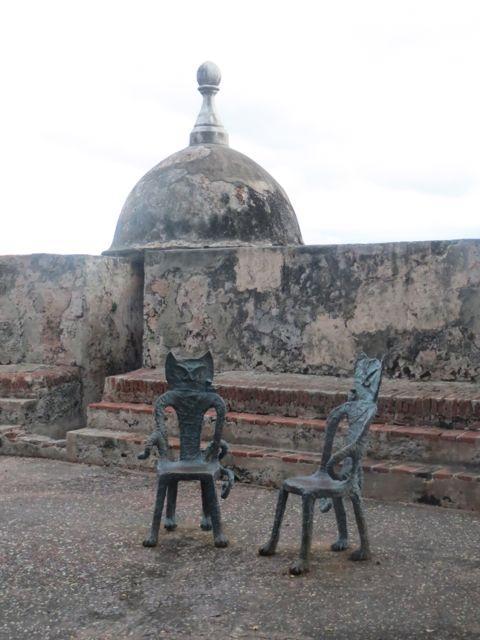
I. Silence In Class
One can make a strategy of taking away from [students] the authority of their marginality .... To be out is really to be in – inside the realm of the visible, the speakable, the culturally intelligible” ... engaging in ... dialogue about “personal” or “private” aspects of yourself ... can make you TOO easy to understand ... maintaining the liminal ... position ... means that you do not become “culturally intelligible”. You can’t be mainstreamed; your deviance cannot be absorbed ...“cannot be contained” (Gayatri Spivak, Outside in the Teaching Machine)
We will begin each classtime with fifteen minutes of shared silence. Please sign up, twice, for taking your turn at structuring this space.
Day 3 (Tues, Sept. 8): Writing Silence
Peter Elbow. “Silence: A Collage.” Everyone Can Write: Essays Toward a Hopeful Theory of Writing and Teaching. New York: Oxford University Press, 2000. 173-183 [this link leads directly to the Bryn Mawr network; to access the text from Haverford, enter the title into Tripod, and follow the instructions to "Connect...from Haverford"].
Emily Dickinson's poems on silence: #407, 633, 932, 1473, 1681, 1700, 1750 ...
By 5 p.m. Wed, Sept. 9: 2nd short posting responding to Sheila Pinkel's questions (adding any of your own that you would like her to address).
Day 4 (Thurs, Sept. 10): SKYPING WITH OUR CREATIVE CONSULTANT, SHEILA PINKEL, about this semester's artistic collaboration.
Day 5 (Tues, Sept. 15): On Being Silenced
Lisa Delpit. "The Silenced Dialogue: Power and Pedagogy in Educating Other People's Children." Harvard Educational Review 58, 3 (August 1988): 280-298;
EITHER Heejung S. Kim and Hazel Rose Markus, "Speech and Silence; an Analysis of the Cultural Practice of Talking,"
OR Greg Dimitriadis, "Popular Culture, Pedagogy and Urban Youth: Beyond Silenced Voices." Beyond Silenced Voices: Class, Race, and Gender in United States Schools, Ed. MIchelle Fine and Lois Weis. Rev. New Paltz: State University of New York Press, 2005. 181-196, 233-250 (in our password protected file).
BECAUSE YOU HAVE A PAPER DUE ON FRIDAY, THERE IS NO WEDNESDAY NIGHT POSTING DUE THIS WEEK--THOUGH EXTRA OR LATE ONES ARE ALWAYS WELCOME!
Day 6 (Thurs, Sept. 17): Talking Silence
Jane Tompkins. "Talking in Class." A Life in School: What the Teacher Learned. Reading, Massachusetts, Addison-Wesley, 1996. 62-65 (in our password protected file).
Margaret Price. Chapter 1. "Listening to the Subject of Mental Disability: Intersections of Academic and Medical Discourses." Mad at School: Rhetorics of Mental Disability and Academic Life. Ann Arbor: University of Michigan Press, 2011. 25-57 (in our password protected file).
Angela Carter, "Teaching with Trauma: Trigger Warnings, Feminism, and Disability Pedagogy." DSQ: Disability Studies Quarterly 35, 2 (2015).
By 5 p.m. Fri, Sept. 18: web event #1 (3 pp.) -- beginning with your own, or a classmate's, or another visualization/vocalization of silence, and using at least one of the texts we've read as your theoretical frame, reflect on your own experiences of silencing and being silenced. When, where and why do you think has this happened? Post these reflections in our on-line class conversation and BE SURE TO TAG THEM both "Web Paper or Special Event" and "English."
Next week I'd like to hold a writing conference with each of you, to reflect on this first paper and plan for your second. We'll schedule these in class.
Sat, Sept. 19: cluster-wide, day-long trip to Philly.
A bus will collect everyone @ Pem Arch @ 9 a.m.
We will take a Restorative Justice Mural Arts tour from 10-noon,
and a tour of Eastern State Penitentiary @ 1 p.m. Afterwards, we will
gather @ OCF Coffee House for an hour's conversation about our experiences.
You'll be given train passes to make your own ways home.
[Also of possible interest: BBQ Not Bars: Community Cookout to Fund Schools, Not New Jails!]
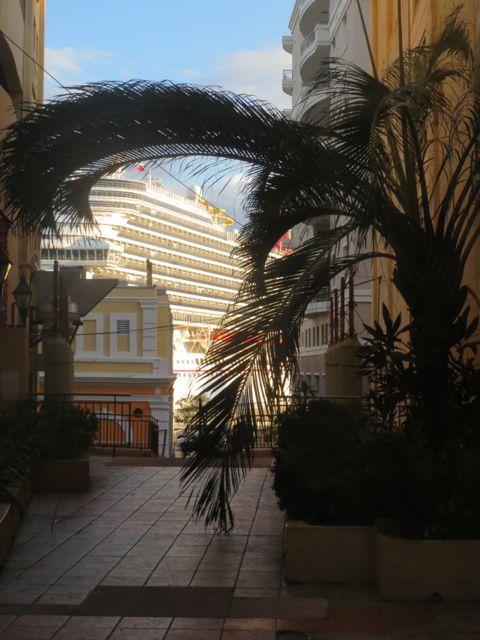
II. Cultures of Silence
… a being who could not renounce saying many things would be incapable of speaking….Each people leaves some things unsaid, to be able to say others…any given silence has its identity as a stretch of time being perforated by sound (Ortega y Gasset).
Day 7 (Tues, Sept. 22): I, Rigoberta Menchú: An Indian Woman in Guatemala. Second Edition. Elisabeth Burgos-Debray, Ed. Ann Wright, Trans. 1983; rpt. Brooklyn: Verso, 2010. 320 pp.
By 5 p.m. Wed, Sept. 21: 3rd short posting, of your afterthoughts or anticipations
Day 8 (Thurs, Sept. 24): I, Rigoberta Menchú, continued...
Day 9 (Tues, Sept. 29): Doris Sommer. "Advertencia/Warning" and "No Secrets for Rigoberta." Proceed with Caution, When Engaged by Minority Writing in the Americas. Cambridge, MA: Harvard University Press, 1999. ix-xv,115-137 (in our password protected file).
By 5 p.m. Wed, Sept. 30, web event #2 (3 pp.): extend your first essay, asking what there might be from our texts, which could offer a helpful perspective on the issues you've raised in your story. What are the broader implications and issues of your narrative?
Day 10 (Thur, Oct. 1): John Edgar Wideman. "In Praise of Silence." Callaloo 22, 3 (Summer 1999): 547-549.
Yves-Charles Grandjeat. "'These Strange Dizzy Pauses:' Silence as Common Ground in J.E. Wideman's Texts." Callaloo 22, 3 (Summer 1999): 685-694.
7 p.m. Mon, Oct. 5: "What Is Freedom?" Dialogue, led by Chris Phillips @ Barnes and Noble, 1805 Walnut Street (on Rittenhouse Square, Philadelphia)
Day 11 (Tues, Oct. 6): John Edgar Wideman. Brothers and Keepers: A Memoir. 1984; rpt. New York: Mariner, 2005. 272 pp.
By 5 p.m. on Wed, Oct. 7, 4th short posting of your afterthoughts about the Socrates Cafe, Wideman's memoir, and/or their intersections.
Day 12 (Thurs, Oct. 8): Brothers and Keepers, continued
John Edgar Wideman. "Personal History: Father Stories." The New Yorker. August 1, 1994: 36-41.
FALL BREAK (Oct. 9-18)
By 5 p.m. on Sun, Oct. 19, post an update on your research project: what have you learned, what do you still need to research, what does it now seem important to you to show others, and what "container" are you begining to imagine might serve as the best vehicle for this display? Please tag this posting "Research Project" so it shows on our shared page.
Day 13 (T, Oct. 20): continue discussion of Wideman's memoir, related issues on campus and in prison
7:30 Wed, Oct. 21: Antigone @ the Wilma [no posting due tonight]
Day 14 (Th, Oct. 22): We'll be joined by Jess Libow, HC '16, who met her
foreign language requirement with the study of American Sign Language.
Benjamin Bahan, “Upon the Formation of a Visual Variety of the Human Race.” Open Your Eyes: Deaf Studies Talking. Ed. H-Dirksen L. Bauman. Minneapolis, Minnesota: University of Minnesota Press, 2007. ProQuest Ebrary. Web. 14 October 2015 (in our password protected file).
Flying Words Project, “Poetry,” performed by Peter Cook, voiced by Kenny Lerner
Clayton Valli's Poem, “Deaf World,” rendered by Jed Galimore
Clayton Valli's Poem, “Hands,” rendered by Claudia Jimenez
In SLOPE: American Sign Language Poetry Special Edition (2004),
go to "Index of Poets and Editors,"
and select Flying Words, "Untitled,"
Ella Mae Lentz, "Eye Music," and
Clayton Valli, "Mushroom."
Brenda Jo Brueggeman. "Words Another Way: Of Presence, Vision, Silence, and Politics in Sign Language Poetry." Lend Me Your Ear: Rhetorical Constructions of Deafness. Washington, D.C.: Gallaudet University Press, 2002. 201-236 (in our password protected file).
Judy Lieff. Deaf Jam. New Day Films, 2011. (Streaming Online: Kanopy.) 71 minutes.
Christine Sun Kim. Is Unlearning Sound Etiquette, Face Opera, and "Partial Thesis Statement" (in our password protected file).
By 5 p.m. on Sun, Oct. 25, post a mid-semester evaluation of this course and cluster: what's working? what needs working on? what's playing well? what needs playing with? (consider both our class dynamics generally, and your own particular role in them)
5:30 Mon, Oct. 26, in the Dorothy Vernon Room: cluster-wide supper to discuss mid-semester evals and classroom dynamics
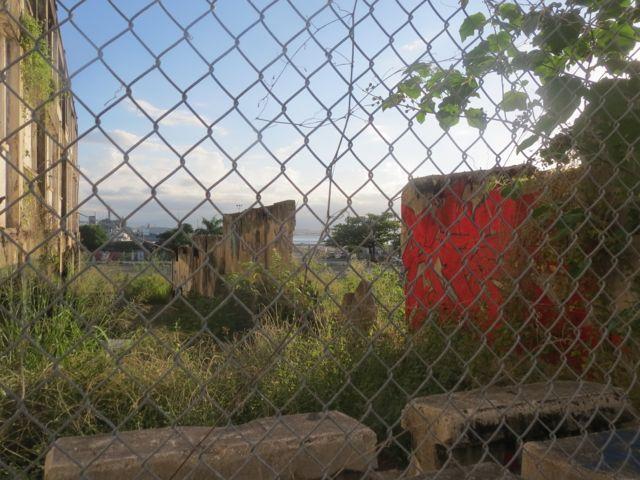
III. Silence in Prison
Every sentence is a prison (Emerson).
No required reading this week, and no Wednesday night post.
Days 15-16 (Tues, Oct. 27-Thurs, Oct. 29): working on your research projects,
in preparation for Sheila's arrival
November 3-5: Sheila Pinker, our creative consultant, will be on campus this week
Day 17 (Tues, Nov. 3): workshop with Sheila Pinker
Come prepared with some sketches of your 'container.'
During the day on Wed, Nov. 4: schedule one-on-one or small-group
meetings with Sheila in Canaday 315 to review your project.
7 p.m. Wed, Nov. 4, in Dalton 119: Sheila Pinker's public talk, "Imaging Incarceration:
The Artwork of Sheila Pinkel and Jack L. Morris" [no posting due tonight]
Day 18 (Thurs, Nov. 5): workshop with Sheila Pinker
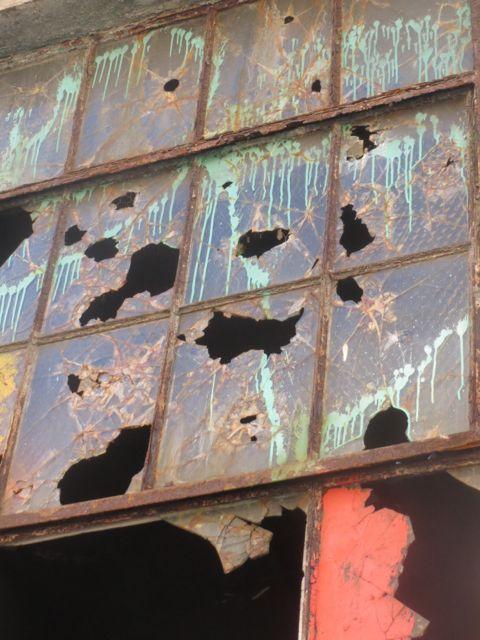
IV. Engendering Silence
These are not natural silences, that necessary time for renewal, lying fallow, gestation, the natural cycle of creation. The silences I speak of here are unnatural; the unnatural thwarting of what struggles to come into being, but cannot. In the old, the obvious parallels: when the seed strikes stone; the soil will not sustain; the spring is false; the time is drought or blight or infestation; they frost comes premature. This book is about such silences. It is concerned with the relationship of circumstances—including class, color, sex; the times, climate into which one is born—to the creation of literature…. A passion and a purpose inform its pages:…hatred for all that, societally rooted…slows, impairs, silences writers (Tillie Olsen, Silences).
Day 19 (Tues, Nov. 10): Alexandra Juhasz et. al. Released: 5 Short Videos about Women and Prison. Hollywood, CA: Lightning Dubbs, 2001. Videodisc: 28 minutes. [on course reserve in Canaday]
Tillie Olsen. “Silences in Literature" and "Silences: Its Varieties." Silences. New York: Dell, 1978. 6-21, 142-151 (in our password protected file).
Michelle Balaev. "Trends in Literary Trauma Theory." Mosaic: A Journal for the Comparative Study of Literature. June 1, 2008 (in our password protected file).
Jason Stanley. The Ways of Silencing. The New York Times (June 25, 2011).
By 5 p.m. on Wed, Nov. 11, 5th short posting of your afterthoughts or anticipations: what are you noticing/questioning about 'literary' silence?
PLEASE ALSO ADD A SHORT COMMENT @ /oneworld/arts-resistance/arts-resistance-final-event ESTIMATING THE COSTS OF YOUR FINAL PROJECT. IF YOU ANTICIPATE NO MATERIAL COSTS, PLEASE SAY SO.
Day 20 (Thurs, Nov. 12): Maxine Hong Kingston. “No Name Woman” and (in our password protected file) “A Song for a Barbarian Reed Pipe.” Woman Warrior: Memoirs of A Girlhood Among Ghosts, 1976. 3-19, 189-243.
Day 21 (Tues, Nov. 17): Adrienne Rich. "Women and Honor: Some Notes on Lying." 1975; rpt. On Lies, Secrets and Silence: Selected Prose 1966-1978. New York: W. W. Norton, 1995. 185-194 (in our password protected file).
Adrienne Rich. "Arts of the Possible." 1997; rpt. Arts of The Possible: Essays and Conversations. New York: W.W. Norton, 2001. 146-167 (in our password-protected file).
Wendy Brown. "Chapter 5: Freedom's Silences." Edgework: Critical Essays on Knowledge and Politics. Princeton: Princeton University Press, 2005. 83-97 (in our password protected file).
By 5 p.m. on Wed, Nov. 18, 6th short posting: your further afterthoughts or anticipations about 'literary' silence.
Day 22 (Thurs, Nov. 19): [read the first 1/2 of] Gayl Jones. Eva's Man. Boston: Beacon, 1987. 186 pp.
Day 23 (Tues, Nov. 24): [finish reading] Eva's Man
By 5 p.m. on Wed, Nov. 25, 7th short posting: a proposal for your fourth web event, interpreting gendered silences in literature.
Thanksgiving Break (Thurs, Nov. 26)
Day 24 (T, Dec. 1): Megan Sweeney, Chapter Three: "Between a Politics of Pain and a Politics of Pain's Disavowal," Reading Is My Window: Books and the Art of Reading in Women's Prisons. Chapel Hill: University of North Carolina Press, 2010. 83-128.
[Also please bring back] Wendy Brown. "Chapter 5: Freedom's Silences." Edgework: Critical Essays on Knowledge and Politics. Princeton: Princeton University Press, 2005. 83-97 (in our password protected file).
Come to class having marked a passage in each Sweeney and Brown that you'd like to discuss-- could be paired, in conversation [or conversation with Eva's Man], or separate...
7-9 p.m. Tues, Dec. 1 in the Ely Room, Wyndham: Jayne Thompson, "Mercy's 'Richer Fruits': Seeking Justice in a Maximum Security Prison." Based on her book Letters to Our Younger Selves, which represents her work teaching creative writing with men incarcerated at Graterford Prison, and includes their self reflections on their pathways to incarceration, the experience of prison, and their ability to develop empathy for their younger selves.
By 5 p.m. on Wed, Dec. 2, web event #3: 5 pp. exploring your current understanding now of gendered silences, by carefully and closely reading a literary text in which they are present. (Models for this sort of critical practice include Doris Sommer's reading of I, Rigoberta Menchu; Grandjeat's reading of Brothers and Keepers; Sweeney's reading of Eva's Man).
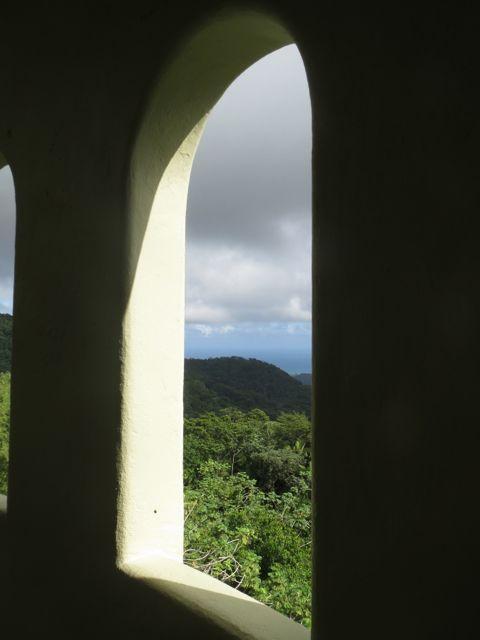
V. Practicing Silence
Our true experiences are not at all garrulous. They could not communicate themselves even if they tried. Whatever we have words for, that is already dead in our hearts. In all talk there is a grain of contempt (Frederick Nietzsche, Twilight of the Idols).
Day 25 (Th, Dec. 3): Michelle Francl (BMC Chemistry professor and blogger @ Quantum Theology) joins us for class. She writes, "If they might bring for me a line or two that somehow encapsulates their sense of silence or solitude, that will give me a way to listen my way into the conversation you have been having all semester (though I’ve been browsing the forum!). It can be an image, a snip of poetry or prose (their own or others). It can be nothing at all, if that’s what speaks to them."
Michelle Francl, Silence Speaks Volumes, Ligorian (October 2013).
Sister Linda Susan Beard. Silence is the Winter Name of God. August 28, 2002.
Caroline Stephen. Selections from Quaker Strongholds, 1890. Rpt. Quaker Spirituality: Selected Writings. Ed. Douglas Steere. New York: Paulist Press, 1984. 239-258 (in our password protected file).
George Kalamaras. "Reclaiming the Tacit Dimension." Reclaiming the Tacit Dimension: Symbolic Form in the Rhetoric of Silence. State University of New York Press, 1994. 1-12 (in our password protected file).
By 5 p.m. on Sun, Dec. 6: 8th short posting, in the form of a 1-p. response to [or multiple short comments on] Anne's draft of "Animating Silence." Note: this text is NOT on Serendip, but on Wordpress, and you will need to sign in to comment using your twitter, facebook or e-mail account. You are part of our 'soft launch,' as we try out the web dimension of our project! By the same deadline, please give us some feedback on the form, usability and accessibility of the web version of this chapter, by completing https://www.surveymonkey.com/r/WYLX526 --with many thanks!
Day 26 (T, Dec. 8): Anne Dalke, "Animating Silence." Draft for Chapter 5 of Steal This Classroom: Teaching and Learning Unbound, by Jody Cohen and Anne Dalke (forthcoming with punctum press, 2016).
Our final event: "Freedom Forgotten: Works of Silence and Resistance"
4:30, Wed, Dec. 9: opening exhibit in the Campus Center
Wed-Thurs-Fri (Dec. 9-11): on-going display
10:00 a.m. Fri, Dec. 11: "Socrates Cafe"
Day 27 (Th, Dec. 10): Maria Popova. The Origin and Cultural Evolution of Silence: Review of George Prochnik’s In Pursuit of Silence: Listening for Meaning in a World of Noise. Brain Pickings. April 4, 2014.
Gordon Hempton, The Last Quiet Places. Radio show/Podcast. May 10, 2012.
Kim Tingley. Whisper of the Wild. The New York Times Magazine. March 15, 2012.
VI. Finishing Up
Mon, Dec. 14-Tues, Dec. 15: Final Conferences with Anne, Jody and Joel in the English House Lounge
By 12:30, Fri, Dec. 18: Portfolio Due (including posting of your art work, description of the "teach-in," your final paper about your experience in prison, your self-evaluation and your banner image)
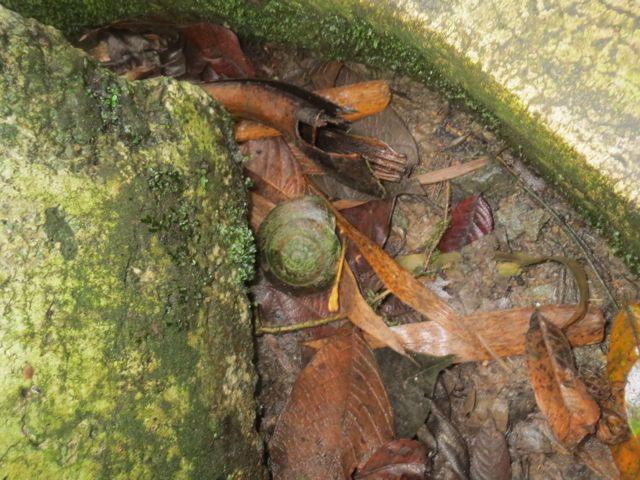
[Anne took the photographs on this page in Viejo San Juan and El Yunque National Forest, on the occasion of the National Women's Studies Association Conference, held in San Juan, Puerto Rico, November 12-15, 2014.]
